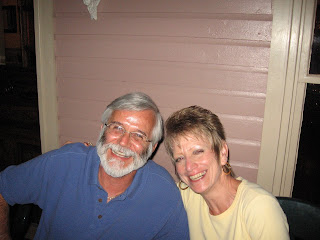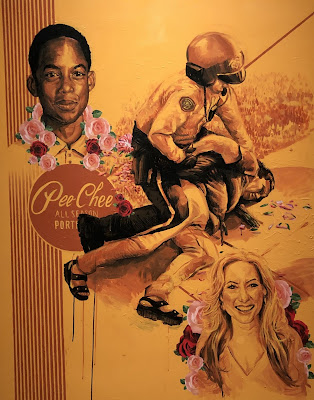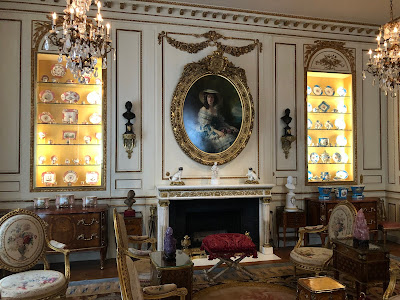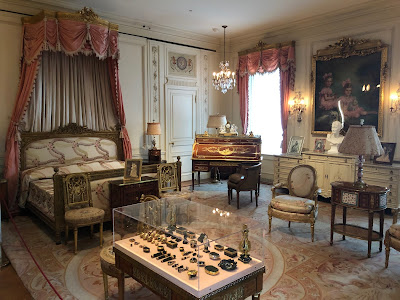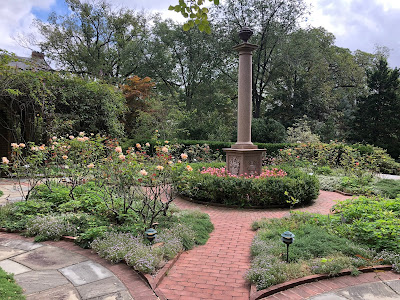High on our to do list for this Washington, DC visit was the Smithsonian National Museum of African American History and Culture. The museum, the Smithsonian's newest, opened in 2016 and celebrates A people's journey, a nations story.
The building is unique in design compared to the other museums and government buildings in the city.
The lead designer was David Adjaye, the son of a Ghanaian diplomat who has traveled to all 54 independent African nations. It's use of the three tiered facade is inspired by the work of 20th century Yoruban craftsman Olowe while the metal work pays homage to the enslaved and free African Americans who crafted the metal work on buildings in Louisiana, South Carolina and elsewhere.
The building has sections that feature culture and community with both temporary and permanent exhibits. Here, a painting of Harriet Tubman.
An amazing quilt depicting Harriet.
Artist Patrick Martinez recreated Pee Chee portfolios showing those killed by acts of police brutality and social unrest.
Breonna Taylor, who was shot by police while sleeping.
Another section of the culture galleries, Musical Crossroads, deals with music. This 1973 Eldorado Cadillac belonged to Chuck Berry. There are listening stations throughout this exhibit where you can hear the music of famous African American entertainers, many singing the songs we grew up with.
The Taking the Stage Gallery deals with TV and stage artists. This is Pittsburgh play write August Wilson.
The Making Way Out of No Way gallery honors those who worked for freedom and rights from before the Civil War and continues today.
A high point being the election of the first Black president, Barack Obama, in 2008.
Rosa Parks and President Lincoln. There were also exhibits, Sports: Leveling the Playing Field and Double Victory: The African American Military Experience that we did not have time to see.
The History Galleries start on the bottom floor with Slavery and Freedom 1400-1877 exhibit. They explain the transatlantic slave trade from their capture in Africa....
....to shipping the people to America aboard over crowded slave ships.
The Paradox of Liberty examines the contradictions of the author of the Declaration of Independence, Thomas Jefferson also being a slave owner. Each of the blocks behind him represent a slave he owned.
Elizabeth Freeman, born a slave, was a Revolutionary War widow who sued her Massachusetts owner John Ashley for her freedom based on the states constitution. Winning her claim to freedom helped end slavery in Massachusetts.
Benjamin Banneker wrote Jefferson pointing out the contradictions that "all men were created equal" and his owning of slaves. Jefferson answered by complimenting him on his intellect, but did not free his slaves. Banneker published the correspondence in his almanacs.
These two maps show how growing cotton expanded between 1820 and 1860. More cotton meant more slaves. While Congress banned importing slaves in 1808, illegal slave trade continued. The last slave ship is believed to be the Clotilda that was scuttled in Mobile Bay in July 1860.
Defending Freedom, Defining Freedom: The Era of Segregation 1876 - 1968 gallery deals with the post Civil War, Reconstruction , Jim Crow and the beginning of the modern civil rights movement. After the Civil War many Black only communities thrived throughout the South. Many of these were marked with violence during the Jim Crow era.
Lynching by White mobs and the KKK was used to intimidate those who prospered and spoke out for rights and freedom. Between Reconstruction and WWII more than 4,400 lynchings took place in the old confederacy.
Another section deals with the modern (in my lifetime) civil rights movement from the end of WWII and through the 1960's. A tribute to John Lewis, one of the leaders of the Selma March and the youngest person to speak at the March on Washington.
President Johnson signing the 1965 Voting Rights Act which outlawed practices put in place by former confederate states that made it hard to impossible for Blacks to vote.
A Changing America: 1968 and Beyond gallery deals with changes the movement has brought. Finally, in 2007 all that hard work paid off with the election of the first African American president Barack Obama. Unfortunately, today's political climate proves that progress is not always moving forward and the struggle continues.
This is a training plane used by the all Black Tuskegee Airmen who served in WWII in segregated units. Here is a video about this plane and the men who flew it. Here is a link to our post about our visit to Tuskegee that has a picture of a plane that I believe is the same one. The African American museum is well worth a visit and clearly shows the struggles and victories that have been achieved for equality but also shows how much further we still have to go.
The hotel we stayed in was by Black Lives Matter Plaza. The street was painted with those words during the 2020 demonstrations protesting the murder of George Floyd.
The plaza became a gathering place for people so the city decided to make it permanent, spelling out the words in concrete and bricks.
This is what it will look like when completed, a powerful message written in stone. After seeing the struggles of African Americans at the museum, it is shameful that we still have not made the progress we need to as a country.


